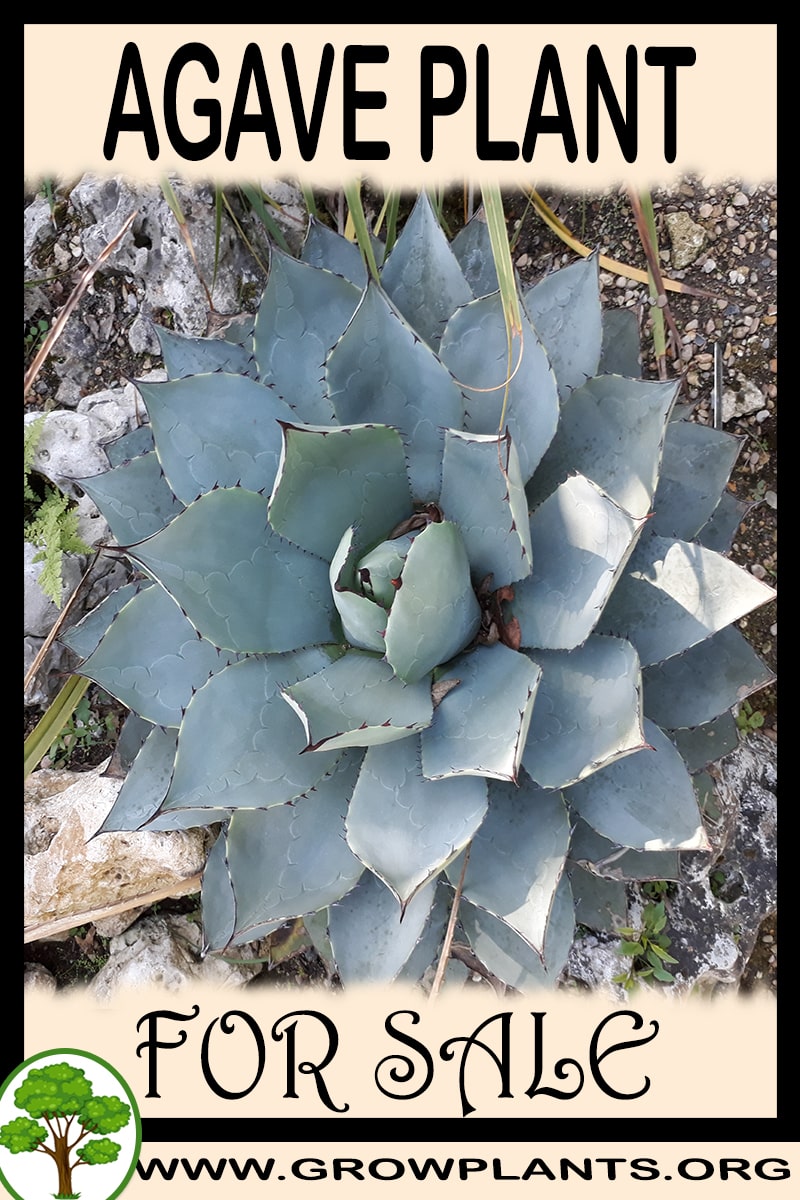
Agave plant for sale in the market is usually an offshoot or cutting from a mother plant. This is the most reliable method of propagation for agave plant. These offshoots are formed at the base of the plant or on the flower stalks. New roots will develop along the stem within 2 to 3 weeks time.
Agave is a long-leaved succulent plant that naturally forms a rosette shape and produces a flower spire of attractive cup shaped blooms. The plant is drought tolerant and perennial, making it ideal for the mature arid garden. You can grow this plant in almost any climate as many varieties grow in different temperatures. . One of these is the century plant (Agave americana) which produces a lovely inflorescence and then the main plant dies, leaving behind pups or offsets. Another one is the American agave or American aloe which has a white stripe running down the center of the leaves. It is a warm season agave only.
Agave plant for sale
The Agave plant has a large tap root and do not transplant well. Therefore, you should choose an appropriate site before planting agave.
Here are the things you should know when planting your agave:
- Location – choose a sunny spot for your agave. At least 6 hours of direct sunlight daily is required to grow a healthy agave. They can also do well in unglazed pots that allow evaporation of excess moisture.
- Soil – Choose a soil that is gritty and well-draining. Amend heavy clay soils with sand or grit. They require moist soil until the roots are established. Dig a hole that is large enough to hold the root ball at ground level. Majority of its roots are surface roots and do not require a deep hole if planted young. If you are planting an offshoot, the new pup may need to be anchored with a mound of soil to keep it upright until the roots form.
- Water – Water the plant diligently for the first week and then cut it to half the second week. Taper off the supply of water until you are only watering once every 1 to 2 weeks. Water needs are moderate to light depending upon the heat of the season but the plants should be allowed to dry out before irrigation. Agave plants in containers will require more water than those in the ground.
- Mulching – Agaves do benefit from a layer of mulch in the soil surface. These plants are dormant in the winter, and most can withstand a light freeze. Covering the plant with organic mulch provides additional protection in cold weather as sustained freeze could kill the plant.
- Fertilizer – Most agave thrives in neglect but will also benefit from the application of a granulated time release fertilizer in the spring.
- Pruning – Many varieties of agave will die after blooming and then produce offshoots from their base to replace themselves. If your planted variety does not die after flowering, remove the spent bloom with long handled pruners.
Categories
| growing |
|
|---|

